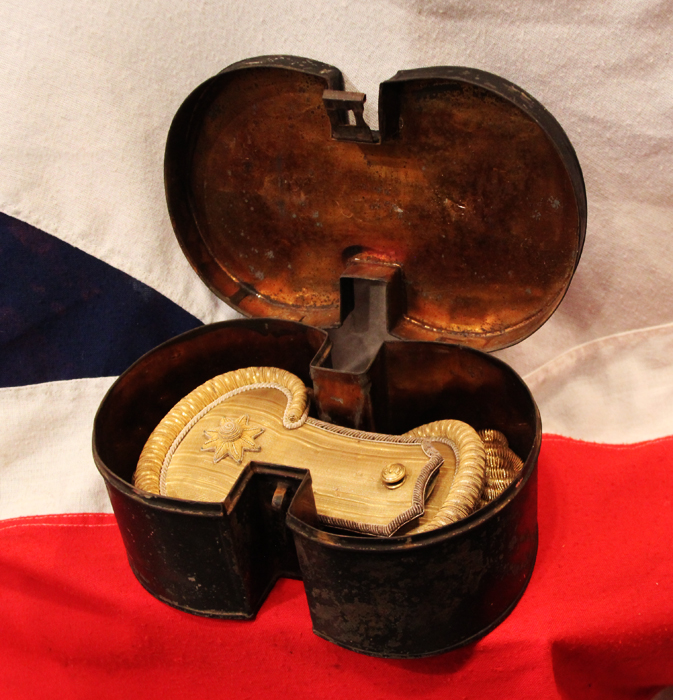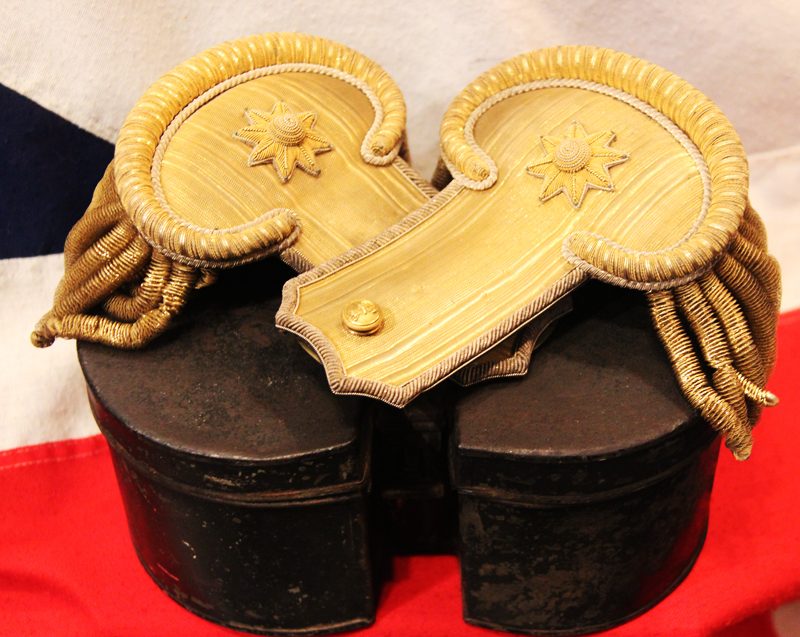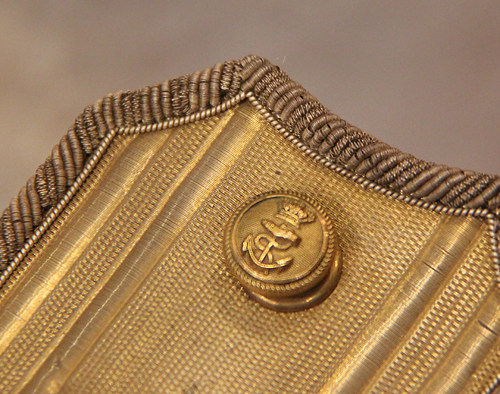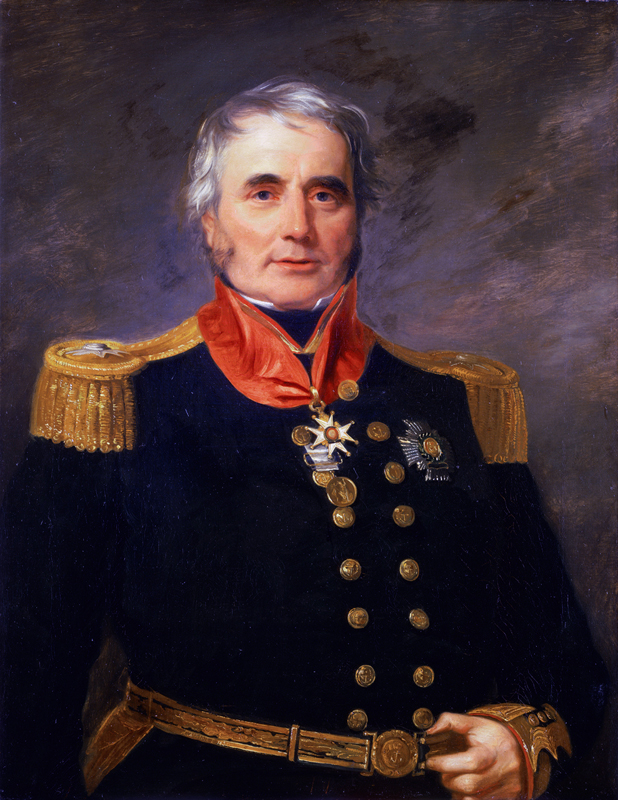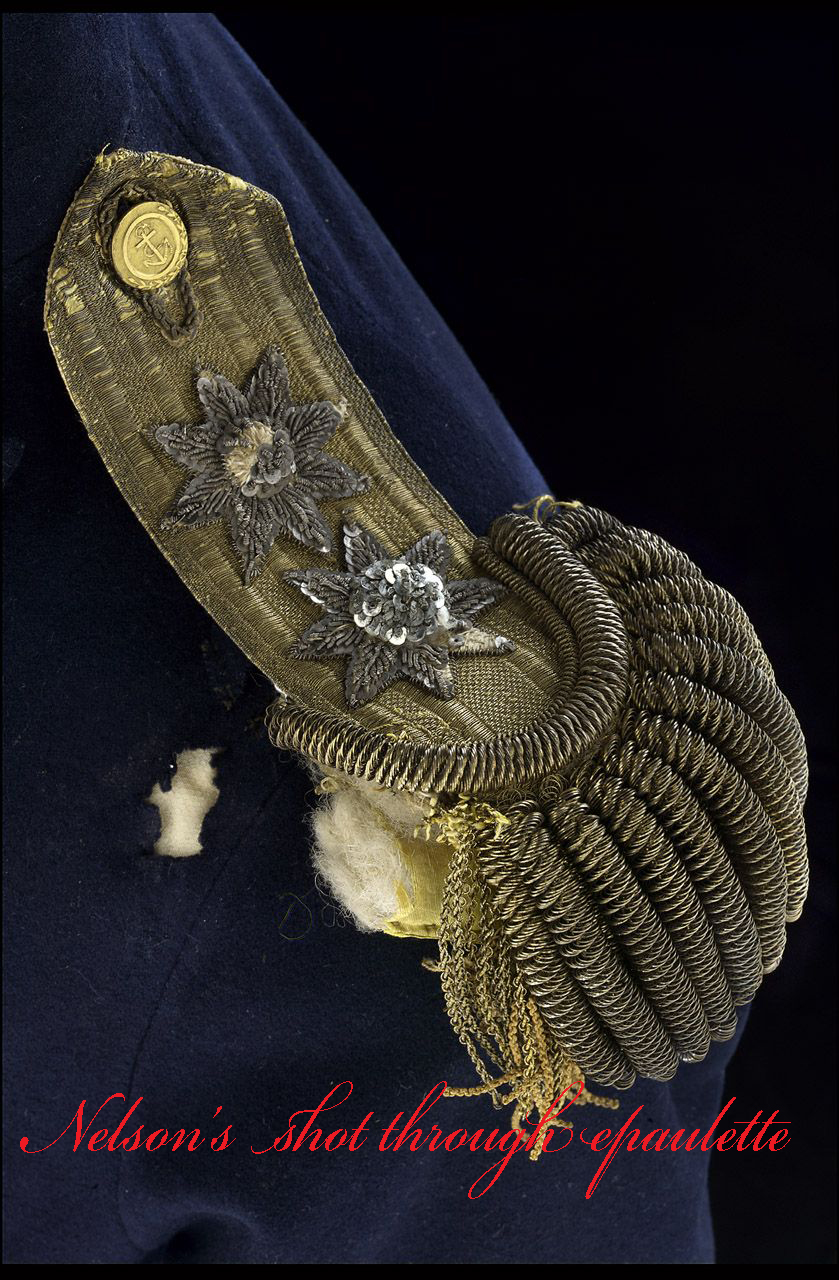A Fine Cased Pair of 1840's Victorian Rear Admirals Epaulettes.
Overall in jolly good condition for age, in their original Japanned lacquer tin case. Made and used in the days of sail, aboard the great ships-of-the-line and the '100 gunners'. Admirals always served aboard the larger vessels in the fleet [also known now as capital ships] in the Royal Navy, His vessal would be known as the admiral's 'flag ship' and flying his personal rank flag. Rear admiral is a naval commissioned officer rank above that of a commodore (U.S. equivalent of rear admiral lower half) and captain, and below that of a vice admiral. It is generally regarded as the lowest of the "admiral" ranks, which are also sometimes referred to as "flag officers" or "flag ranks".
It originated from the days of naval sailing squadrons and can trace its origins to the Royal Navy. Almost all of the modern traditions of the world's navies can trace there traditional origins back to the British Royal Navy. Each naval squadron would be assigned an admiral as its head, who would command from the centre vessel and direct the activities of the squadron. The admiral would in turn be assisted by a vice admiral, who commanded the lead ships which would bear the brunt of a naval battle. In the rear of the naval squadron, a third admiral would command the remaining ships and, as this section of the squadron was considered to be in the least danger, unless from a surprise attack from the rear. The admiral in command of the rear would typically be the most junior of the squadron admirals. This ranking has survived into the modern age, with the rank of rear admiral the most-junior of the admiralty ranks of many navies. Epaulette is a type of ornamental shoulder piece or decoration used as insignia of rank by armed forces and other organizations. In the French and other armies, epaulettes are also worn by all ranks of elite or ceremonial units when on parade. It may bear rank or other insignia, and should not be confused with a shoulder mark - also called an shoulder board, rank slide, or slip-on - a flat cloth sleeve worn on the shoulder strap of a uniform (although the two terms are often used interchangeably).
Epaulettes are fastened to the shoulder by a shoulder strap or passenten, a small strap parallel to the shoulder seam, and the button near the collar, or by laces on the underside of the epaulette passing through holes in the shoulder of the coat or by a metal slide arrangement. Colloquially, any shoulder straps with marks are also called epaulettes. The placement of the epaulette, its colour and the length and diameter of its bullion fringe are used to signify the wearer's rank. Although originally worn in the field, and they certainly were when these were made, epaulettes are now normally limited to dress or ceremonial military uniforms. A photo in the gallery of Nelson's shot-through epaulette from Trafalgar. He has two stars due to his superior Admirals rank.
Code: 21806
995.00 GBP

